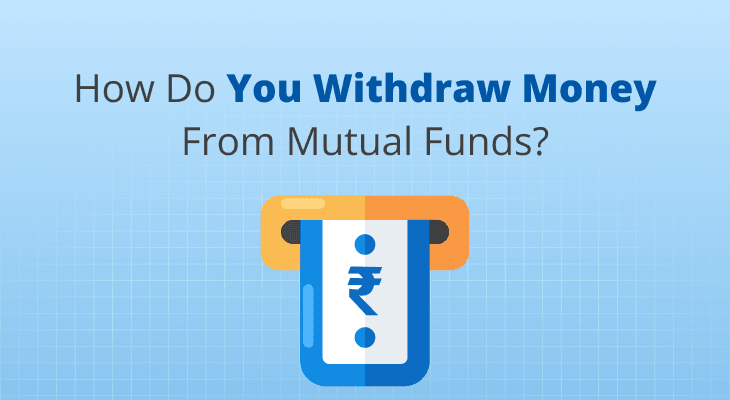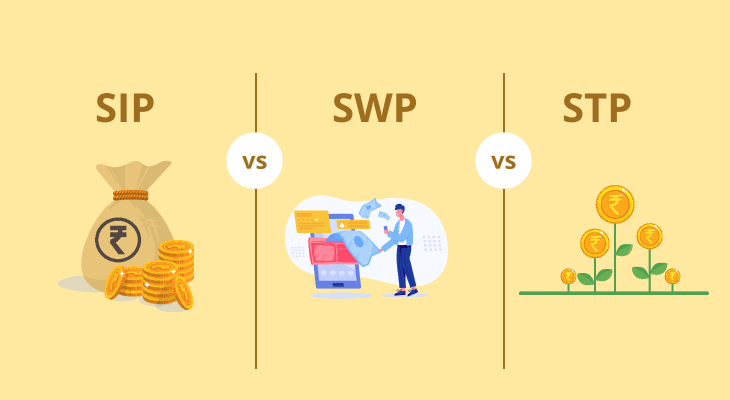
How Do You Withdraw Money From Mutual Funds?
An essential component of contemporary investment, mutual funds are praised for their accessibility and capacity to increase wealth. However, knowing the ins and outs of investing as well as when and how to withdraw money from mutual funds is just as important. Although the ideal outcome for investing is long-term profits, there are situations when you may need to access the funds you have invested due to unanticipated costs, crises, or reaching certain objectives. It becomes crucial at this point to comprehend withdrawal mechanisms.
Understanding the withdrawal procedure is essential, regardless of whether you want to take a partial or complete withdrawal to meet your financial goals. Before making any selections, read this blog to help you navigate various withdrawal procedures and important factors to consider. Knowing the ins and outs of how to withdraw mutual funds can help you manage your assets sensibly and make decisions that will help you reach your financial goals.
Understanding Mutual Fund Withdrawals
Redeeming your investment in order to obtain your invested cash is the process of withdrawing from mutual funds. In contrast to certain alternative investment choices, mutual funds provide liquidity, enabling investors to fully or partially redeem their assets in accordance with their needs.
Mutual funds are a desirable option for investors due to their liquidity. Knowing the withdrawal procedure is crucial, regardless of whether you're taking money out to pay for unforeseen costs or to reach particular financial objectives.
Methods of Withdrawing Money from Mutual Funds
Through Your Trading & DEMAT Accounts
Access Your Account
You can take money out of your trading and DEMAT accounts directly if you have invested in mutual funds through them. Enter your credentials to access your trading or DEMAT account.
Choose Withdrawal Option
After logging in, go to your account's withdrawal or redemption area. Select the mutual fund plan that you want to take money out of.
Send In A Request For Withdrawal
Confirm the transaction after entering the desired withdrawal amount. After your request is reviewed, the money will be sent to the bank account you have connected in a few days.
The Assistance Of The Registrar And Transfer Agent
Assistance With Local Transactions
RTAs, or registrar and transfer agents, help with mutual fund transactions, including withdrawals. To begin the redemption procedure, go to the closest RTA office.
Online Redemption
Using their websites or specially designated portals, several RTAs also provide online redemption options. To begin the withdrawal process, sign in to your account, choose the mutual fund plan, and adhere to the instructions.
Comply With The Redemption Process
Give the required information, including your PAN, redemption amount, and Folio Number. Check the transaction details and indicate that you are ready to move forward with the withdrawal.
Through A Broker Or Distributor Directly
Get In Touch With Your Broker
To start the withdrawal procedure, if you purchased mutual funds through a broker or distributor, just get in contact with them. In addition to calling or emailing them, you can visit their office.
Requesting An Offline Withdrawal
A withdrawal request form will be sent to you by your broker, which you must complete. When the form is finished, provide it to your broker, who will send it to the Asset Management Company (AMC) so that it may be processed.
Online Redemption
With their websites or mobile applications, a lot of brokers already provide online redemption options. You may make your online withdrawal request by simply logging into your account, going to the redemption area, and following the instructions.
Through Asset Management Company
Offline Redemption
To begin the redemption procedure, go to the Asset Management Company's (AMC) closest branch office. Complete the relevant forms and send them in with any appropriate paperwork.
Online Redemption
AMCs now provide the option for online redemption via their mobile apps or official websites. Proceed to the redemption area after logging in with your credentials to begin the withdrawal procedure.
Share The Required Information
Input information such as your Permanent Account Number (PAN), Folio Number, and redemption amount. Check the transaction details and indicate that you are ready to move forward with the withdrawal.
Redeem with Ease: Online Mutual Fund Withdrawals at Your Fingertips
Want to access the money you invested? With online redemption, you may manage your mutual funds from the convenience of your home or place of business, providing a quick and easy option. Whether you made your investment through a third-party platform or directly with the fund company, here's how to withdraw mutual fund online:
Go Online
Go to the mutual fund or investing platform's official website.
Unlock Your Portfolio
To see the specifics of your investments, log in with your Folio Number and Permanent Account Number (PAN).
Choose Your Path
From your portfolio, decide which particular mutual fund plan you want to take a payout from.
Determine Your Amount
Customize the redemption to your requirements by selecting the precise amount or the number of units you wish to take out.
Verify And Proceed
Verify your redemption request by carefully going over the transaction information. The money will be instantly paid into your associated bank account when it has been authorized.
The specific procedures could change a little according to the platform you use. For comprehensive instructions, visit their official website or mobile app. If you just need a portion of your money, think about partial redemptions, which will let your remaining investment grow.
Basics of Withdrawing from Mutual Funds
Before taking any action to remove funds from your mutual fund investments, it's critical to comprehend the following important elements that may influence your choice and ultimate financial result:
Tax Impacts
Tax implications are a major factor when withdrawing from mutual funds. You could have to pay taxes on the profits you make, depending on elements including the mutual fund type and length of investment. If you redeem your assets within a year, you may be liable to short-term capital gains tax; long-term profits may be subject to other tax rates. You may minimise your net earnings and negotiate the tax ramifications by speaking with a tax professional.
Exit Load
Mutual funds sometimes carry exit loads, which are expenses incurred if you withdraw your investments before a predetermined time frame. Before making a withdrawal, it's critical to be aware of these exit loads since they may reduce your earnings. Exit loads normally have a range of 1% to 2%, while the precise amount may differ based on the mutual fund plan.
Processing Time And Lock-In Time
Investments in mutual funds may have a lock-in time during which you are not permitted to withdraw your money without paying penalties. Withdrawal processing times can also differ, but online redemptions often take less time than traditional ones. By being aware of these variables, you may plan your withdrawals wisely and stay away from needless fines or delays.
Prevent Idling
Before taking money out of mutual funds, it's important to have a clear financial objective or aim in mind. Having idle money in your bank account might rob you of the rewards of an active investment in addition to impeding your ability to make profits. To optimise the value and possible returns of the withdrawn money, make sure you have a plan in place for how to use it.
Conclusion
Mutual fund withdrawals are simple to do and provide investors with ease and flexibility. AMCs and RTAs can be contacted directly, through brokers, online, or through a variety of other channels to enable easy access to your investments. Investors may protect their financial interests and optimise returns by carefully navigating the redemption process and taking into account variables including fund type, lock-in length, exit loads, and holding time.
SIPs let you invest small amounts regularly, making it easier to stay consistent with your goals. With time, your money grows faster through compounding, helping you get the most out of your investments. Try our SIP Calculator to see how your money can grow and make smarter plans for your future.
FAQ
Can I take money out of my mutual fund at any time?
Although the majority of mutual funds have liquidity, others, like ELSS and fixed maturity funds, have lock-in periods that limit withdrawals until the term ends.
Is it safe to redeem mutual funds online?
In order to protect investor transactions and information, mutual fund official websites and authorised platforms that facilitate online redemptions have strict security procedures in place.
How much time does it take to handle a redemption request for a mutual fund?
Depending on the platform and redemption method, requests for mutual fund redemptions are processed in different amounts of time. Offline redemption requests could take several days to process, however, online redemptions are usually completed more quickly.
Does redeeming a mutual fund come with any costs?
If units of mutual funds are redeemed before a predetermined time, exit loads could be applicable. Furthermore, there's a chance that some platforms or brokers would charge transaction fees for handling redemption requests.
Can I partially redeem my mutual fund units?
Yes, depending on their needs, investors can choose to partially redeem their mutual fund units. When submitting the redemption request, you have the option to indicate how many units you would want to redeem.


